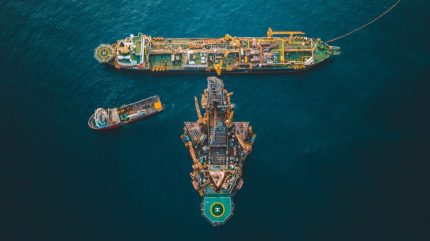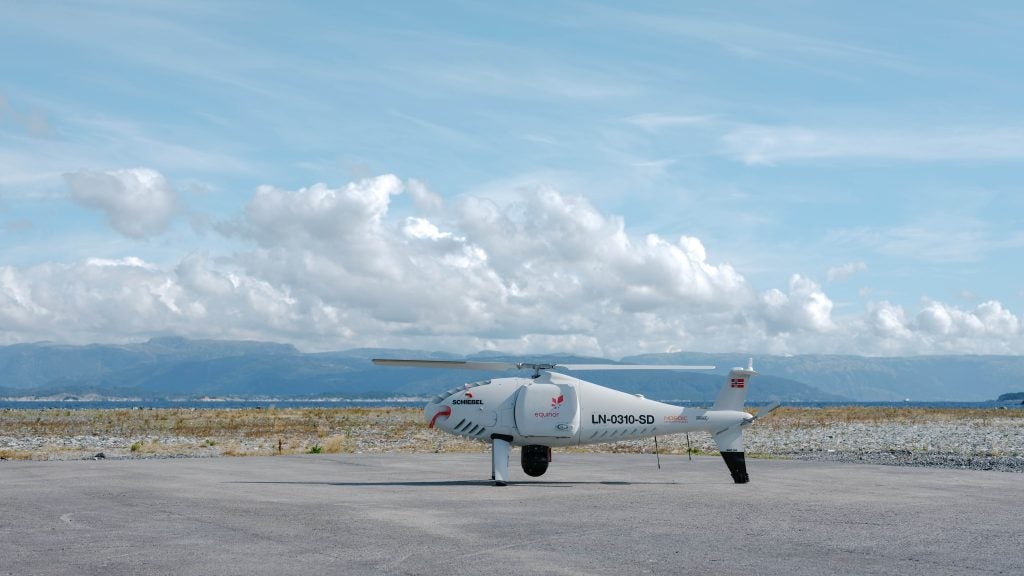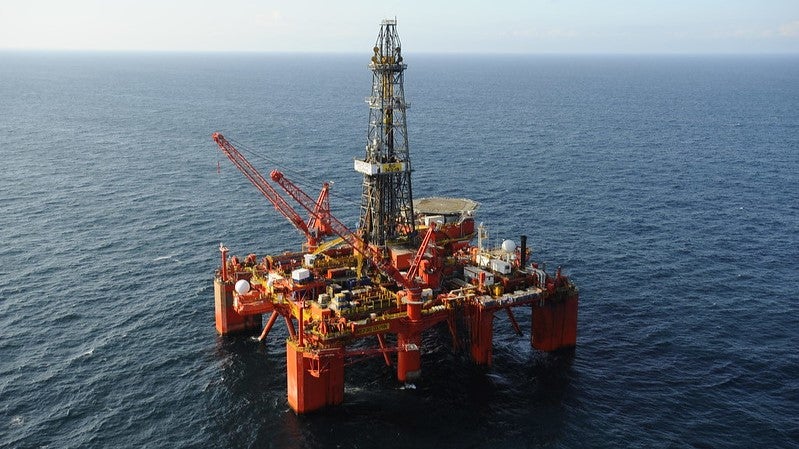
A variety of use cases for drones are materialising across both onshore and offshore oil and gas, many of which are helping to reduce risk in the sector.
GlobalData’s new Drones in Power report outlines that the global drones market is seeing rapid growth, having been worth $15.2bn in 2020 and estimated to reach $89.6bn by 2030. The strongest area of growth in the market is expected to come from commercial drones, which will be worth $57bn by the end of the decade.
Cheaper and safer than alternatives, drones offer remote access to difficult-to-reach sites, useful for the monitoring and management of offshore oil and gas assets. Tethered drones, visual line of sight (VLOS) drones and beyond VLOS (BVLOS) drones have found demand among major players in the sector.
In fact, most major players have now adopted drones in some capacity, including Chevron, Equinor, National Offshore Oil Corporation (CNOOC) Repsol, Saudi Aramco, Shell and Total.
The technology offers a myriad of uses, with drones used for payload delivery, oil spill detection, integrity inspections and the monitoring of drilling towers and elevated work sites.

Drones for offshore oil and gas operations
Compared to the employment of divers and helicopters, drones offer two significant reduction areas – operational costs and risks to human life.
Depending on the needs of the asset, they can be equipped with GPS sensors, visual range cameras, infrared cameras and light detection and ranging (Lidar) equipment to offer real-time evaluation of assets through a live feed.
GlobalData analyst Pinky Hiranandani explains: “They can integrate different sensors and imaging technologies for tasks such as nondestructive testing, leak detection, predictive maintenance, surveying, corridor mapping and disaster management. Manned aircraft and other inspection methods like autonomous underwater vehicles (AUVs), remotely operated vehicles, and remote sensing satellites are available but are costly and require specialised operators.”
Aerial drones, also known as unmanned aerial vehicles (UAVs), streamline processes and take employees out of high-risk environments. They also offer new angles of insight, enabling accurate monitoring and visual reconstruction of assets.
For example, Shell used drones to monitor the construction of its Shell Polymers Monaca, (known as the Pennsylvania Chemicals facility at the time). The drones provided aerial images used to produce dimensionally accurate 3D models spanning the 1.62km² site.
In April 2024, Chevron shared that, in collaboration with American Aerospace Technologies (AATI), it has received a first-of-its-kind waiver from the US Federal Aviation Administration (FAA), allowing it to fly an AiRanger drone for pipeline inspection in the San Joaquin Valley. The flights will usually be preplanned and automated, but monitored by humans.
Repsol primarily uses drones in operations at its exploration and production offshore platforms for annual flare tip inspections and elevated structures inspections for assets in Norway and the UK.
A spokesperson for Repsol told Offshore Technology: “The use of drones promises significant advantages: reduction of operational costs, enhanced reliability of data acquisition, mitigation of workplace accident risks, and reduction of CO₂ emissions associated with operations.”
Repsol recently ran its Autonomous Robot for the Identification of Emulsified Liquids project, aiming to use a multi-drone system in the detection of hydrocarbons at sea. Conducted by Repsol Sinopec Brazil in partnership TideWise, the project included an autonomous system capable of identifying oil spills through visual inspection technologies and collecting meteo-oceanographic data for oil dispersion models.
Inaugural tests of the system were successful, and Repsol’s spokesperson explained: “TideWise successfully conducted the inaugural tests of the initial Ariel prototype during an operation at an offshore wind farm in Belgium. The ongoing investments in research and development aim to refine the initial concept for broader application in decommissioning and offshore wind energy activities.”
Drones offer potential in the inspection and management of a huge array of assets, including fin fans, electrical lines, transformers, pipe racks, jetties and cable trays. However, GlobalData analyst Anson Fernandez notes that there is a gap between the industry’s needs and the current provisions.
“Drone technology vendors might not necessarily be well-versed with the specific requirements at an oil and gas operational site,” he explained.
“It is important for oil and gas players to collaborate with drone technology vendors to develop best drone assemblies with sensors and other equipment, for a more suitable application within the industry. Once a suitable drone assembly is implemented and successfully tested, it can be more readily scaled to address a wider market (including smaller or regional industry players).”
A developing sector
Drone technology is a developing sector then, but Fernandez added: “With successful use cases from industry leaders for drones in offshore operations, a wider adoption is likely to follow.”
In Repsol’s case, the company told Offshore Technology that it is evaluating the use of drones in the external inspection of vessels and tanks in its oil and gas operations in Norway. It also intends to use drone technology in inspection campaigns at facilities in the decommissioning phase that are already unmanned.

The spokesperson added: “Repsol Sinopec Brazil is developing the SAMA Project, which aims to develop an autonomous platform, solar-powered, designated as a drone, for onshore asset monitoring, equipped with a variety of optical and gas measurement sensors.”
In line with progress in the wider robotics industry, future developments look likely to focus on the use of AI and machine learning, used to enable drones to make effective and efficient real-time decisions.
Hiranandani explained: “Drones feature the use of AI and machine learning which enable obstacle avoidance, autonomous navigation and decision-making. AI-powered drones use computer vision to detect objects and analyse data in real time. This can help perform complex inspections and monitoring tasks more accurately and efficiently.”
Considering areas of development to watch, she also points out that advancing battery technologies are a focus for developers, as higher-energy-density batteries enable longer flight times.
Hybrid VTOL tech is also emerging, according to Hiranandani, who said that this technology “combines vertical lift capability of multirotor drones with long-range efficiency of fixed-wing drones. These drones can perform both detailed inspections and large area surveys.”




